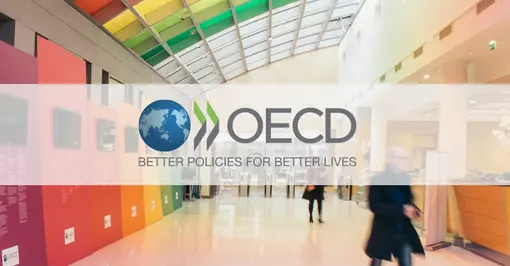OECD Presents Streamlined Transfer Pricing Approach for Baseline Distribution Activities
The OECD has released the highly-anticipated report on Amount B of Pillar One, which includes guidance on Special considerations for baseline distribution activities.

This report has been incorporated into the OECD Transfer Pricing Guidelines for Multinational Enterprises and Tax Administrations 2022 (OECD Guidelines) as an Annex to Chapter IV. Jurisdictions have the option to implement this guidance for fiscal years commencing on or after 1 January 2025 either through (i) a taxpayer-elected simplified approach, or (ii) prescriptive binding rules for in-scope taxpayers.
The report outlines the characteristics of in-scope distributors and provides a 3-step pricing framework to determine their return on sales (ROS). It also provides guidance on documentation, transitional issues, and tax certainty.
Key highlights of the simplified and streamlined approach are set out below.
- Application issues: transfer pricing outcomes under Amount B in an adopting jurisdiction do not bind non-adopting counterparties. However, the report emphasizes a commitment from the members of the Inclusive Framework (IF) to respect the outcome if the adopting jurisdiction is a 'low-capacity jurisdiction' aiming to alleviate potential double taxation in cases covered by bilateral tax treaties. India has not agreed to be bound by this commitment.
- Scoping: the report adopts quantitative scoping criteria while relying on standard transfer pricing principles of accurate delineation and functional analysis to determine qualifying distribution transactions. In-scope transactions encompass the wholesale distribution of tangible goods, with allowances for incidental retail sales, while explicitly excluding the distribution of digital goods, commodities, and services.
- Pricing: the pricing framework includes a pricing matrix, an operating expense cross-check mechanism, and a data availability mechanism. It outlines agreed returns for baseline marketing and distribution activities, featuring 15 distinct target returns ranging from 1.5% to 5.5%. Operating expense cap-and-collar ranges cross-check the ROS in the pricing matrix. Country specific adjustments are triggered by the data availability mechanism for qualifying jurisdictions (with the list of jurisdictions to be published on the OECD website and updated every 5 years). The report includes relevant benchmarking search criteria in Appendix A and eight illustrative examples in Appendix B.
- Documentation: the report outlines essential information in the Local File that provides sufficient information for evaluating taxpayers' positions under Amount B, with suggestions to simplify documentation for small and medium enterprises. Leveraging the Master File is recommended. For first-time application, taxpayers should consent to apply the approach for a minimum of 3 years in their Local File or other documentation.
- Tax certainty and elimination of double taxation: the report provides that taxpayers should base their position on the remainder of the OECD Guidelines if the simplified approach is not accepted by all relevant jurisdictions in a mutual agreement procedure (MAP), arbitration procedure or unilateral adjustment mechanism for resolving disputes. The IF has directed Working Party 1 to develop text for inclusion in the Commentary on Article 25 of the OECD Model Tax Convention in 2024. The report also clarifies that pre-existing agreements in bilateral or multilateral advance pricing agreements and MAPs will remain valid.
It will be important for businesses to monitor implementation of the guidance by jurisdictions and tax authorities. The report indicates that the IF will conclude work on designing additional optional qualitative scoping criterion and a list of low-capacity jurisdictions by 31 March 2024. Furthermore, it will collect data on the practical use of the simplified approach after implementation, following a framework to be developed in 2024. Due consideration will be given to produce further implementation guidance as needed.